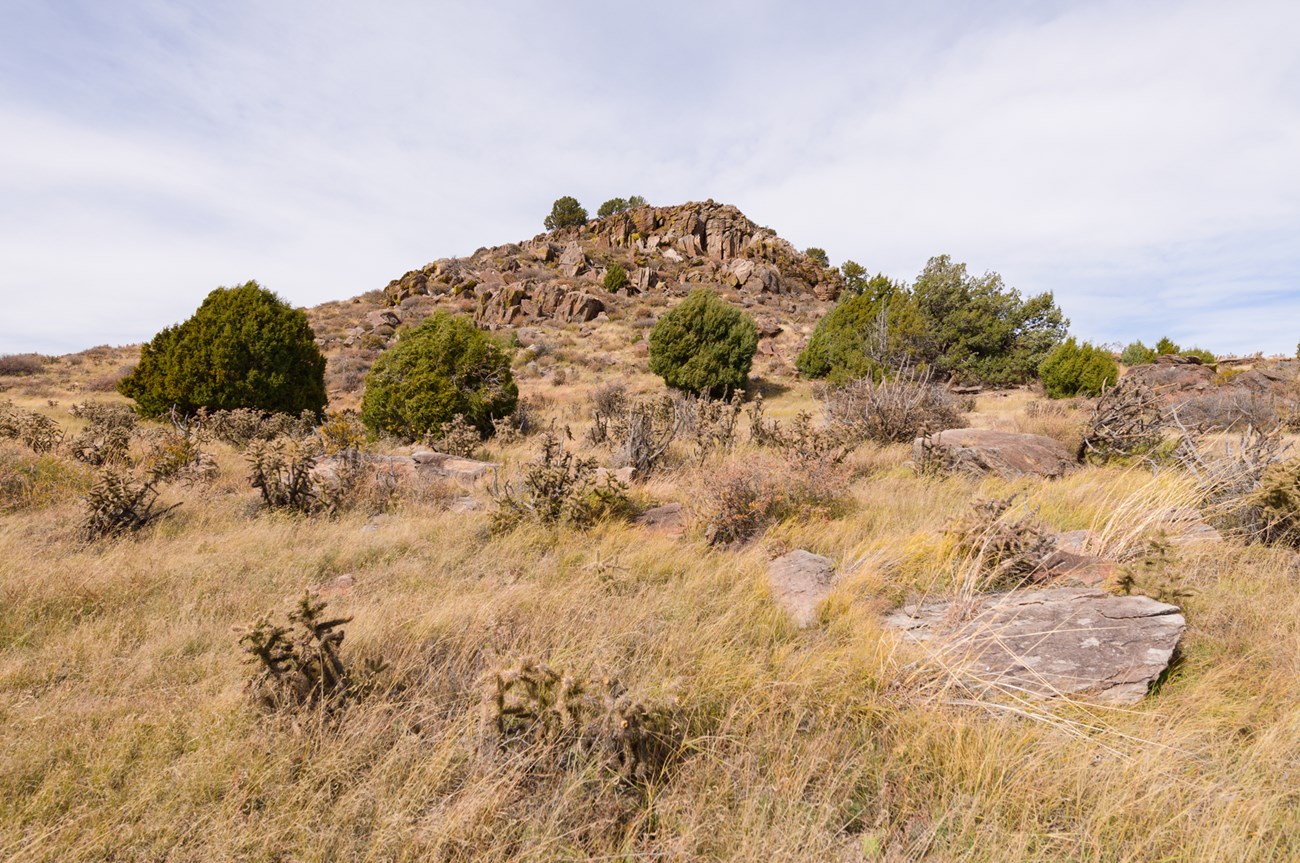Part of a series of articles titled National History Day.
Article
Place-Based Research

Rising above the Kansas grasslands, Point of Rocks was an important landmark for Santa Fe Trail travelers.
Photo/NPS
Why research places?
Places are host to the stories, people, events, and ideas that make up our history books. Places ground history and help us experience the past. When you research a place, you can explore site-specific history, local context, change over time, origins of ideas, reasons for conflict, and more.
Places are more than just where history happens. Places can play a critical role in what happened and why it happened. For example, the Santa Fe Trail followed natural resources that were essential for the survival of travelers and their animal companions. Rivers and fertile grasslands were places of conflict because they provided resources needed by many groups.
Being in places
If you have the opportunity to visit the place you are researching, you should! Being in a place can help you understand more about your research topic by helping you experience it.
For example, visiting trail ruts in the Kansas prairies can help you understand the vastness of the land trail travelers crossed. Seeing the prairies will help you understand why landmarks (like mountains) were important guides for travelers.
Resources for researching places
You can find great information about places in local or state archives, newspapers, museums, and libraries. Check online to see if the area you are researching has digitized collections. Call or email local organizations if you cannot find what you need.
Collections where you might find information about a place:
- Map collections – a historical map can tell you about a place’s history and context
- Building permit collections –building permits can tell you about changes in structure and ownership
- Photograph collections – historical photos can help you understand a place’s changes over time, what happened there, and who was there in past
- City directories – can show who owned or lived in a place and their occupations
- Census Records – can show who lived in a place
- National Register of Historic Places Nomination Forms – contain detailed breakdowns of historic buildings (including photos) as well as useful essays providing historical context
Resources for teaching with places
NPS Teaching with Historic Places
The National Park Service’s Teaching with Historic Places offers many educational activities and products to help teachers bring places into the classroom.
What is Place-Based Education and Why Does it Matter?
This report produced by Getting Smart explains what place-based education is, how it can be used, and case studies of successful implementation
Researching an Historical Site Lesson Plan
This lesson plan prepares students to conduct their own place-based research
Last updated: August 31, 2020
